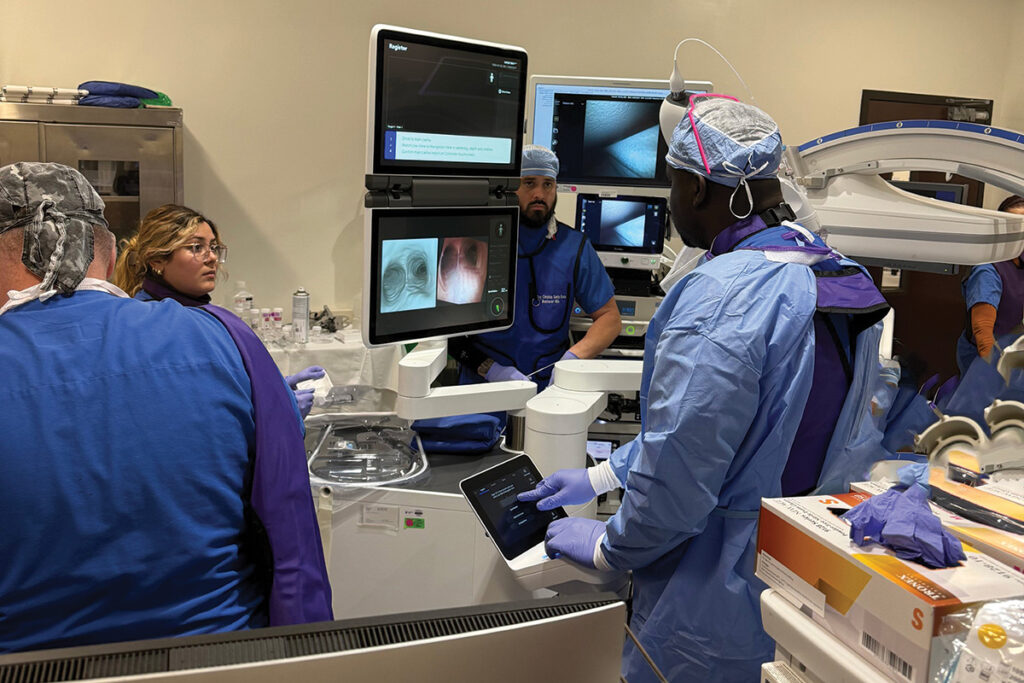
DVT Is on the Rise Why Women Are at Greater Risk and How to Stay Protected
By Dr. John S. Hogg, MD | Medical Vein Clinic
When news broke that Victor Wembanyama, a rising star with the San Antonio Spurs, would miss part of the season due to deep vein thrombosis (DVT), the shock rippled across our city and the sports world. His case served as a timely reminder that DVT can affect anyone, from world-class athletes to everyday travelers, and that early detection can be life-saving.
Wembanyama’s diagnosis reflects a broader trend we’ve been tracking at Medical Vein Clinic: DVT cases are climbing at an alarming rate, particularly among younger patients who traditionally weren’t considered high-risk.
A Concerning Rise in DVT Cases
We’ve documented a sharp increase in DVT diagnoses; higher than what we typically expect during summer months, when dehydration and reduced activity are more common. This upward trend began during the pandemic and continues to accelerate.
What’s driving this increase? Multiple converging factors create the ideal conditions for blood clots: more people are sitting for extended periods while working, studying, or commuting. Add dehydration, injury, or underlying vein disease, and the risk of clotting increases dramatically.
DVT no longer fits the old stereotype of affecting only older, less mobile patients. Today, we’re treating patients of all ages. Some arrive weeks after a seemingly unrelated health event, experiencing swelling in one leg – that’s when we discover the clot.
While men face slightly higher overall risk between ages 45 and 60, women encounter a distinctly different set of risk factors that deserve special attention.
Women’s Unique DVT Risk Profile
DVT ranks as the third most common vascular disease in the United States, but women face specific challenges that can complicate both prevention and diagnosis.
Hormone-Related Risk Factors
Birth Control: Estrogen-containing contraceptives, including pills, patches, and rings, significantly raise the risk of DVT and pulmonary embolism. The risk increases further when combined with other factors like age over 35 or BMI over 25.
Pregnancy and Postpartum Period: Hormonal changes during pregnancy increase blood’s tendency to clot, while increased blood volume and pressure from the growing uterus can impair circulation in the legs. This elevated risk persists for several weeks after delivery, when many women are focused on recovery and may dismiss leg symptoms.
Hormone Replacement Therapy (HRT): Estrogen therapy prescribed after menopause also elevates clotting risk, though the benefits may outweigh risks for some women.
How DVT Presents Differently in Women
Research shows that women more commonly develop distal DVT affecting the lower leg, while men typically experience proximal DVT in the thigh or pelvis. This difference matters because lower leg symptoms can be subtler and easier to dismiss, potentially delaying crucial diagnosis and treatment.
Essential Knowledge for Women
Understanding your individual risk empowers better decision-making. Before starting hormonal birth control or hormone therapy, share your complete medical history, especially any personal or family history of blood clots. Ask your healthcare provider about progestin-only contraceptives, which don’t carry the same estrogen-related clot risks.
Remember that while the absolute risk of DVT with hormonal birth control remains low, recognizing warning signs is crucial: pain, swelling, warmth, and redness, particularly affecting one leg.
When DVT Becomes Life-Threatening: Learning from Real Cases
Tennis champion Serena Williams was first diagnosed with DVT in 2011 and later experienced multiple clotting events, including a serious postpartum embolism. Her willingness to share her story helped raise awareness about DVT risks among female athletes and new mothers.
The story of Anna Frutiger carries an even more urgent message. At just 23, Anna was a former Division I swimmer and dental student who appeared perfectly healthy. She died suddenly from a pulmonary embolism—a blood clot that traveled to her lungs from an undiagnosed DVT in her leg.
These cases highlight a sobering reality: each year, an estimated 350,000 to 600,000 Americans are diagnosed with DVT or pulmonary embolism. More than 100,000 will die from these clots, many without warning.
Summer Travel: Elevated Risk Season
Peak travel season brings additional DVT concerns. Long flights, extended road trips, and disrupted routines create multiple risk factors that can slow circulation—and slow-moving blood tends to clot.
Travel-related risk factors include:
- Extended periods of sitting
- Dehydration from flights or heat exposure
- Minor injuries or trauma during travel
- Reduced sleep and limited movement
Recognizing DVT Symptoms
DVT symptoms typically affect one leg and may include heaviness, aching, or swelling; warmth or redness; and tenderness or cramping. If you experience these symptoms—especially combined with shortness of breath or chest pain, seek immediate medical care.
Accurate Diagnosis Makes the Difference
DVT diagnosis relies on ultrasound imaging, but equipment quality varies significantly between facilities. At Medical Vein Clinic, we use specialized ultrasound machines designed exclusively for vascular imaging. These advanced tools are operated by board-certified physicians who focus specifically on venous, arterial, and lymphatic care. This precision ensures we detect clots that other clinics might miss.
Prevention: Simple Steps with Significant Impact
Whether you’re traveling, working at a desk, or recovering from surgery, these strategies help maintain healthy circulation:
The Calf Pump Exercise:
- Plant your feet flat on the floor
- Raise your heels, then lower them slowly
- Repeat every few minutes throughout the day
This simple movement simulates walking and activates your “calf pump,” which helps return blood to the heart. Stay well-hydrated and take short walks every hour. Wherever you are you can do squats or walk around the house, the airport, or the office. Just keep moving.
Your Partner in Vascular Health
If you’re experiencing leg pain, swelling, or redness, don’t wait. Early diagnosis and treatment save lives. At Medical Vein Clinic, we provide comprehensive care for every patient, whether you’re managing hormone-related risks, recovering postpartum, or preparing for travel. Our goal is protecting your mobility, comfort, and long-term health.
For a vein evaluation, call 210-622-8000 or visit www.medicalveinclinic.com. Our website features educational videos and detailed information about state-of-the-art treatments.
Healthy Legs Take You Further™




